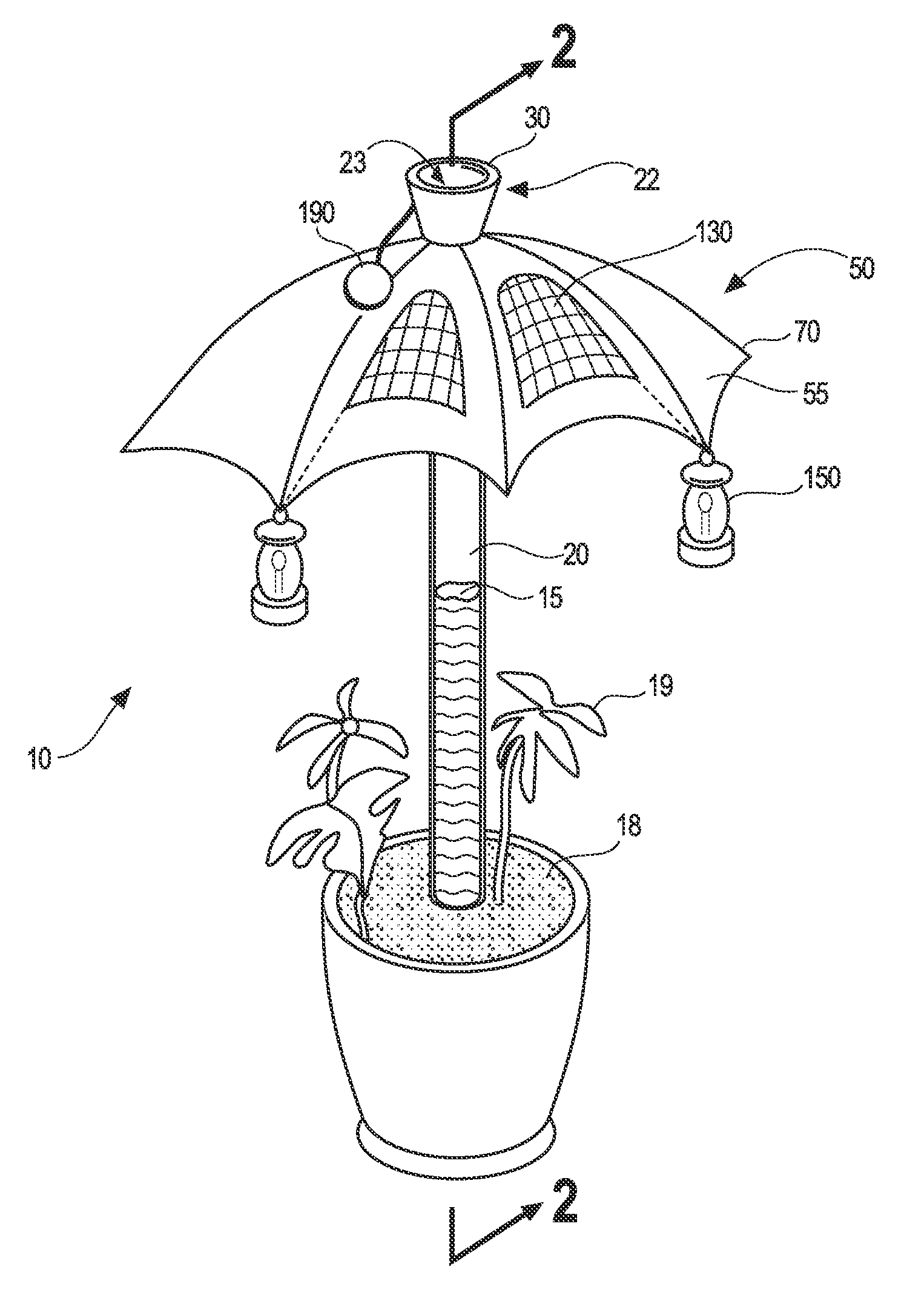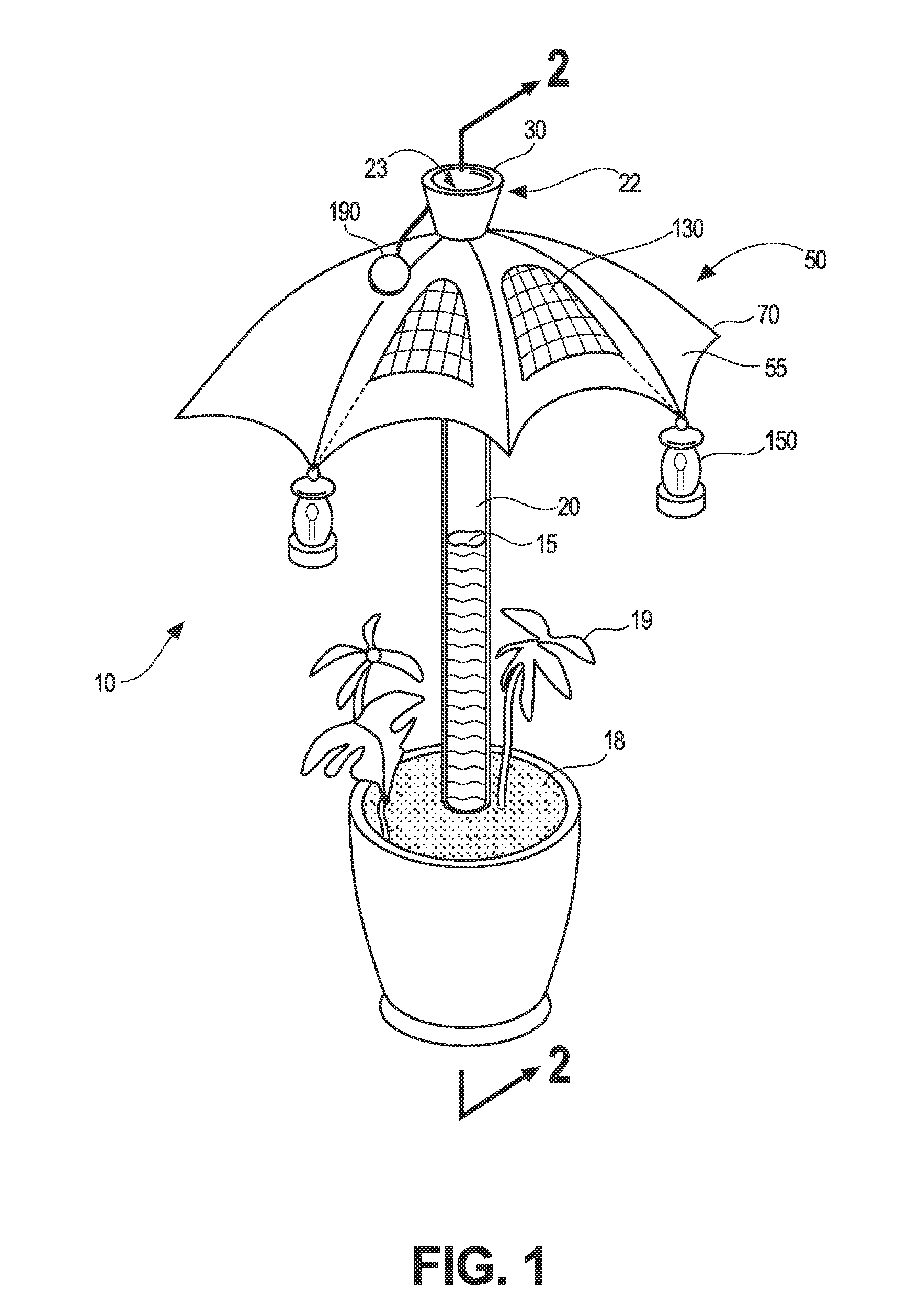Plant Watering and Shading Device
a shading device and plant technology, applied in the field of plant husbandry, can solve the problems of not providing means for rainwater collection, no additional shading provided by the watering device, and no cover device adjustabl
- Summary
- Abstract
- Description
- Claims
- Application Information
AI Technical Summary
Benefits of technology
Problems solved by technology
Method used
Image
Examples
Embodiment Construction
[0019]FIG. 1 illustrates a watering and shading device 10 for at least one plant 19. The device 10 comprises an elongated substantially hollow shaft 20 having a top end 22 and a bottom end 24. The top end 22 terminates in a preferably flared funnel-shaped opening 23 for receiving water 15, and the bottom end terminates in a soil-penetrating spike 40 for inserting into soil 18. The spike 40 includes at least one aperture 45 therein for allowing water 15 to pass from the inside of the hollow shaft 20 therethrough. The shaft 20 is preferably made from an extruded plastic tube, injection molded plastic, or the like. A non-porous cover 190 may be further included for attaching to the opening 23 at the top end 22 of the shaft 20 for preventing water 15 from filling the shaft 20. The shaft 20 is preferably transparent or translucent so that the amount of water 15 within the shaft 20 may be readily visible.
[0020]In one embodiment of the invention, the shaft 20 is telescoping and as such hei...
PUM
 Login to View More
Login to View More Abstract
Description
Claims
Application Information
 Login to View More
Login to View More - R&D
- Intellectual Property
- Life Sciences
- Materials
- Tech Scout
- Unparalleled Data Quality
- Higher Quality Content
- 60% Fewer Hallucinations
Browse by: Latest US Patents, China's latest patents, Technical Efficacy Thesaurus, Application Domain, Technology Topic, Popular Technical Reports.
© 2025 PatSnap. All rights reserved.Legal|Privacy policy|Modern Slavery Act Transparency Statement|Sitemap|About US| Contact US: help@patsnap.com



